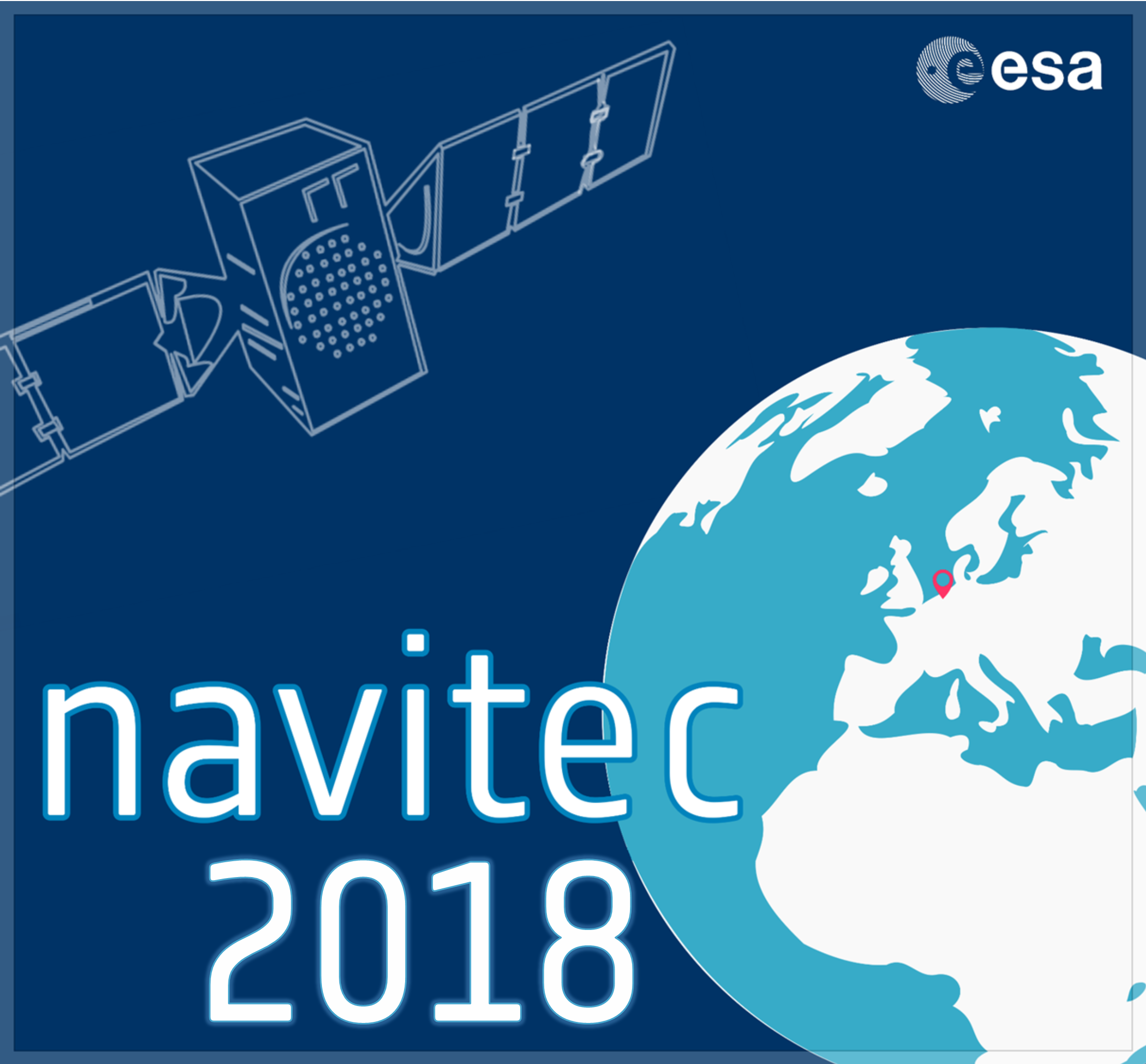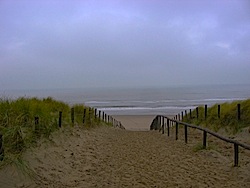This week’s Navitec Conference, entitled “Navigating the Future of Transportation,” delivered good news to an appreciative crowd at the European Space Agency’s European Space Research and Technology Centre (ESA/ESTEC) in Noordwijk, the Netherlands.
This week’s Navitec Conference, entitled “Navigating the Future of Transportation,” delivered good news to an appreciative crowd at the European Space Agency’s European Space Research and Technology Centre (ESA/ESTEC) in Noordwijk, the Netherlands.
For ESA’s Massimo Crisci, the aim of Navitec 2016 was to bring the user community to the place where Galileo and EGNOS satellites are designed because, as he said in the runup to the announcement of Galileo Initial Services today (December 15, 2016), “We are shifting from system-building to supporting new applications, of which there are many in the transportation domain. We want to listen to your needs; so, let’s get started.”
The opening plenary session featured speakers representing maritime and rail transport, and unmanned aircraft systems. Attendees heard the good news about Galileo and were reminded again of GNSS vulnerabilities and the need for enhanced security, signal authentication, and such. And there was an eyebrow-raising presentation on a new potential GNSS back-up system called STL.
But it was Nick Lambert of the UK’s Satellite Applications Catapult who drew raucous applause when he said what no other observer in the room, and possibly around the world, could have said better; “I want to use all these [GNSS and other positioning] systems,” he announced. “And I want it in a box, and I want it all in the same box, and I want a user interface that makes sense to me, and I want to be taught how to use it and then I want to make judgment calls as to whether or not I believe the information I’m getting.”
Having ascertained that no one in the room had been born after 1990, Lambert went on to propose that we were all therefore “digital immigrants.”
“We are the transitional generation,” he said. “We know how things used to be done. My daughter, on the other hand, born after 1990, if the white arrow disappears, she’s snookered.
“So, the technologies are fantastic and the opportunities are brilliant,” he said, “but it’s all about understanding the user, training the user, providing an interface that makes sense, and building in resilience and reliability, because these ‘digital natives,’ post-1990, are building business models based on a technology that they love but don’t understand.”
At this point came the applause.
The “systems” that Lambert wants to use include GPS, Galileo, astrolabes and sextants, and anything else that’s useful, including, possibly, Satellite Time and Location (STL), a new service being touted as a muscular GNSS backup.
Game Changer?
Stewart Cobb, senior RF hardware systems engineer for U.S.-based Satelles, said his company is using existing low-earth-orbit Iridium satellites, normally used for communications, to deliver a powerful signal for accurate and resilient positioning, navigation, and timing that works anywhere, including indoors.
“The STL signal is about 1,000 times more powerful than GNSS signals,” he said, “and it has some serious cryptography built in. This makes STL much easier to hear in difficult locations and much harder to jam or spoof.”
Iridium already has 66 operational satellites in orbit, with more to come starting in 2017. Among the key applications enabled by STL, Cobb said, is ensuring automated beer delivery trucks, like Anheuser-Busch’s “Otto,” don’t get hijacked, which the room agreed is really very important. Other possible applications were also suggested.
Cobb did acknowledge one of the system’s main limitations: “STL works a lot like the old Transit system where you watch a satellite go overhead and you take a series of fixes and between them you figure out your position,” he said. “With GPS you need four satellites to get a fix, but generally you can see 10 or 12 so you can get a fix almost instantaneously. Basically, with STL it’s going to take longer to get a precise fix.”
This is going to be an inherent issue for STL, but Cobb says he thinks a very good solution indeed could involve combining STL and GNSS signals in a “best of both worlds” scenario.
Finally, representing the interests of the autonomous flying vehicles community was Demoz Gebre-Egziabher a professor of aerospace engineering at the University of Minnesota, who cited new research aimed at risk reduction through “sense and avoid” technologies and sometimes simple but potentially powerful redundancy measures in the exploding drone-based services sector.
The Dramatic Entrance
The star of the show, though, was always going to be Galileo. ESA’s impressive Carla Signorini got the European GNSS ball rolling with her opening presentation, citing the 10.3 newly awarded billions of euros in funding announced at the agency’s Ministerial Council earlier this month.
“This is a very good sign,” said Signorini, head of ESA’s Electrical Engineering Department, “because it shows that ESA Member States, even in this not-very-favorable economic period consider space as strategic and important. It is also a confirmation of trust in the European Space Agency, that it is ready to lead in space development. And it is also an excellent example of cooperation.”
Indeed, Signorini described cooperation on Galileo and EGNOS as a “symbol.” “Because together,” she said, “not only the ESA Member States but also the European Commission, also extra-European states, who together, the space segment with the ground segment, with the users, the applications, and all of you are, of course, an example of this excellent cooperation.”
Signorini recalled the ambitious and suspenseful blasting into orbit of four new Galileo satellites onboard the Ariane 5 launcher last November, which she witnessed personally in Kourou, French Guiana. “We have more launches planned,” she said, “with four satellites at a time, in the next years, which will bring us to 24 operational satellites and full service by 2020.”
Immediate challenges for the GNSS service provision community, Signorini said, include the broader capabilities that will be enabled by the next-generation 5G mobile network.
“And then there is the ‘mega-constellation’ paradigm, where not hundreds but thousands of satellites will deliver a variety of signals that could be used for positioning and other services. Where will we fit in this new paradigm?” she asked.
Progress of a Program
ESA’s Marco Falcone, head of the Galileo System Office, added weight to the Galileo success story in the form of hard numbers, citing overall figures for Open Service positioning (3–8 meters at PDOP less than 6), ranging error (0.81 meter across all satellites), and coordinated universal time (UTC, about 9.5 nanoseconds) and Galileo/GPS Time Offset (GGTO) timing (0.68 nanoseconds), all very good to excellent and still improving.
“The November 17 launch was very important,” Falcone said, “and watching as I did from Toulouse, seeing and hearing the team on the ground coordinating four satellites at the same time, it was very impressive.”
Falcone reported that all of the Galileo satellites launched in 2015 and 2016 are operating as expected, with the four launched in November still under commissioning procedures, moving towards their final orbits. The two satellites that were injected into anomalous orbit in 2014 have been moved into better orbits and are now “fully usable,” he said.
“We have more launches coming,” Falcone added. “With each new launch we are filling more orbital plane slots. We have more satellites in production; next week we will have for the first time six satellites in various stages of production here in Noordwijk. That will bring to an end the production run by OHB, and there is a new procurement process underway.”
Falcone went on to describe further advances in ground segment development, and he repeated the call to be on the lookout for initial services.
The tone of the conference’s opening day was positive, with no misfires, no Galileo program delays to explain, no budget wrangling to report, and the right amount of success to celebrate. And the new challenges on the horizon sound like fun. Judging by the reactions of the crowd, the organizers weren’t the only ones having a good time.






